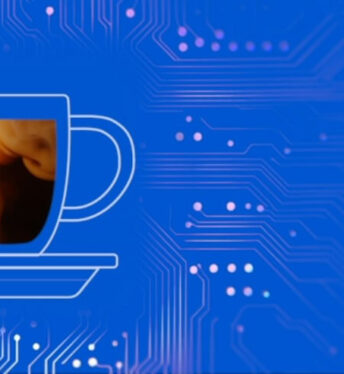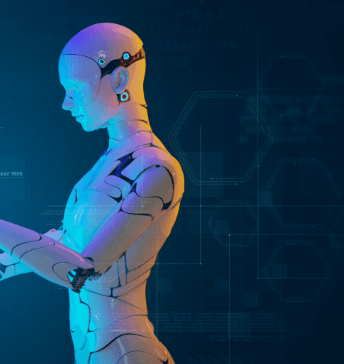As technology continues to evolve rapidly, businesses need to stay ahead of the curve and anticipate changes in the industry. As we move closer to 2023, five key infrastructure trends will shape how IT functions within businesses and the wider world.
In this blog post, we’ll discuss these five trends and how they could affect the future of IT. Technology’s rapid evolution is changing how we live, work and play. Smart devices need to communicate with each other quickly and reliably. Speed and reliability ensure critical services like energy management or tracking the supply chain function well and remains secure.
1. Internet of Things
The Internet of Things (IoT) is a term used to describe the connection of everyday objects to the internet. This technology allows these devices to collect and exchange data, allowing for more efficient, automated processes. IoT has become an essential part of the modern digital infrastructure with its wide range of applications.
Various industries utilize IoT, from healthcare to agriculture. By using connected sensors and actuators, businesses can monitor their operations more efficiently and make decisions quickly. For example, agricultural companies can use IoT to track soil moisture, air temperature, and crop health. Furthermore, hospitals can use it to track vital signs and monitor patient care.
IoT will continue to be an important trend in the coming years as more businesses recognize the value of connected devices. In the future, we can expect to see more smart devices used in different industries. This technology has the potential to revolutionize how we interact with the world around us, and its influence on our lives is only going to grow as time goes on.
The Internet of Things (IoT) is a network of physical devices, vehicles, buildings and other objects embedded with electronics, software and sensors. It enables these objects to collect and exchange data with other devices.
Two factors have driven the growth in this sector: firstly, people want more connected technology; secondly, they’re willing to pay for it because they see how helpful such technologies can be in their everyday lives
It’s no surprise that many businesses are investing in IoT technology. The problem is that most of them are making mistakes and failing to get the best return on their investment.
Common mistakes companies with IoT include unclear goals. IoT technology is a tool that can help you achieve your goals. Still, it’s only possible to determine how best to use the technology if you know what those goals are. For example, IoT technology can improve customer service efficiency by employing call center sensors.
2. The Cloud
The cloud is one of the most talked-about infrastructure trends and revolutionizes how companies operate. Cloud technology has been around for years, but its capabilities have exponentially increased over the last decade. The cloud allows businesses to store data securely and access it from anywhere with an internet connection. It also allows for scalability, so companies can quickly add new applications and resources as needed without having to invest in expensive hardware or software.
Cloud services are becoming more sophisticated and offering more features, such as automated backups, disaster recovery, and high-availability solutions. Businesses can access their data and applications faster, even during peak demand or unexpected outages. Furthermore, cloud solutions are more cost effective than traditional on-premises solutions, allowing businesses to save money while still accessing the same powerful features.
The cloud will likely continue to be a critical part of IT infrastructure as we advance, with businesses benefitting from its scalability and flexibility.
3. Big Data
Big Data is a term used to refer to the voluminous amount of data that organizations generate. This data can come from multiple sources, including customers, operations, partners, and the internet. Companies use Big Data to understand their customers better, develop new products and services, and gain competitive advantages. Big Data can be used to analyze vast amounts of data to discover hidden patterns, correlations, and insights that can inform decision-making.
By leveraging big data analytics, companies can find new opportunities to optimize their operations, increase efficiency, and reduce costs.
Big Data can also help companies create more personalized customer experiences. With the proper analysis, businesses can use Big Data to identify customer needs and develop customized products and services. Furthermore, big data helps understand customer preferences, which helps create targeted marketing campaigns that are more effective.
Big Data technology is continuously evolving. As such, it will be one of the most important trends that will shape the future of IT by 2023. Companies will have to invest in the necessary infrastructure to collect and analyze large amounts of data to stay competitive. Furthermore, they need to hire data scientists to turn this data into actionable insights.
4. Blockchain
The use of blockchain technology is quickly gaining traction in the business world, with many companies investing in its potential. Blockchain provides a secure way to store and transfer digital assets and information while preventing tampering and fraud. This makes it an attractive choice for businesses looking to protect their data and transactions from malicious actors. With its ability to secure data and enable secure transactions, it’s no wonder that blockchain technology is expected to revolutionize many industries in the coming years.
One of the most popular applications of blockchain technology is in cryptocurrencies. Cryptocurrency is a digital currency that can be exchanged for goods and services and secured through blockchain technology. It eliminates the need for traditional intermediaries like banks, allowing faster, more secure transactions. As cryptocurrency continues to gain traction in the global economy, more businesses are beginning to adopt blockchain-based solutions to streamline their operations and increase efficiency.
In addition to cryptocurrency, blockchain technology has many other potential applications. It can securely manage supply chains, automate contracts and other agreements, facilitate peer-to-peer networks, manage identities, and more. In the coming years, we’ll likely see increased adoption of blockchain technology as businesses become aware of its potential and explore new ways to utilize it.
5. Artificial Intelligence
Artificial Intelligence (AI) is a significant part of our lives. AI’s applications include voice recognition, facial recognition and autonomous vehicle navigation. AI can also create sophisticated algorithms that help organizations make better decisions.
At its core, AI is all about using computers to solve problems that are difficult for humans to solve. AI automates tasks, identifies data patterns, and even provides insights into customer behaviors. AI optimizes processes, identifies opportunities for improvement, and enhances customer experiences. With AI, businesses can stay ahead of the curve and make smarter decisions.
For example, suppose a business needs to predict market trends or anticipate customer demands. In that case, they can use AI to analyze historical data quickly and accurately. AI also allows businesses to detect anomalies or unusual behavior and take corrective measures before costly losses occur.
Furthermore, AI provides real-time analytics so companies can track performance indicators, such as sales volumes, customer satisfaction scores, and other metrics. Finally, businesses can leverage AI to develop customized products and services based on customer needs and preferences.
As AI becomes more advanced, it can handle more complex tasks. For example, AI can process natural language, detect fraud, and predict customer behavior. In addition, AI can help organizations better understand their data and make informed decisions quickly and accurately.
AI will also play an essential role in the IT infrastructure of the future. By 2023, AI-enabled systems may automate mundane tasks and take over more complex tasks from humans. This will allow companies to reduce costs and increase efficiency. Additionally, AI-based systems will improve customer service and create new revenue streams.
Overall, Artificial Intelligence is a vital infrastructure trend of the future. With its wide range of applications and potential for automation, AI could dramatically reshape IT by 2023.
Conclusion
As technology continues to advance at an ever-increasing rate, so do the trends in IT infrastructure. By 2023, these five significant trends – cloud, big data, internet of things, blockchain and artificial intelligence – will reshape the IT landscape. Companies must be prepared for these changes and understand how they will impact them. The organizations that stay ahead of the curve and make suitable investments in their IT infrastructure will be the ones who can capitalize on the opportunities that come with these new technologies.
Author Bio: William Shakes is a business strategist specializing in sales, outreach and marketing strategies for businesses of all sizes. He has a deep understanding of what it takes to drive success.
Stefanini Infrastructure Expertise
The Internet of Things influences many industry verticals and across society. Advancements in analytics, cognitive learning and the proliferation of IoT sensors across modern businesses prepare us for a new era of predictive forecasting.
Are you ready to explore what IoT can do for you? If so, partner with us. We offer a variety of IoT methods to help you optimize business and production processes, reduce costs and increase throughput for a brighter, more agile tomorrow.



















